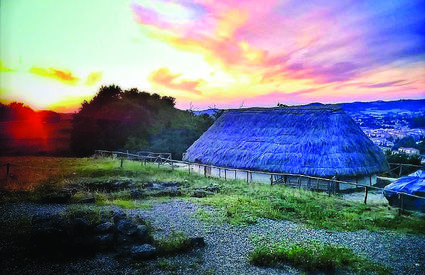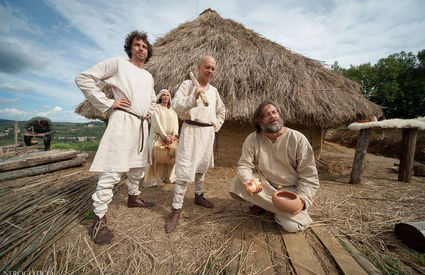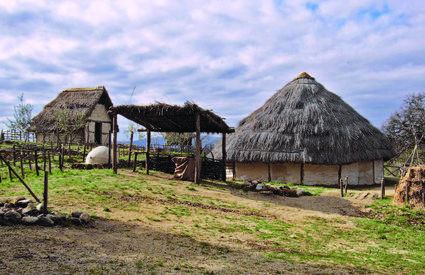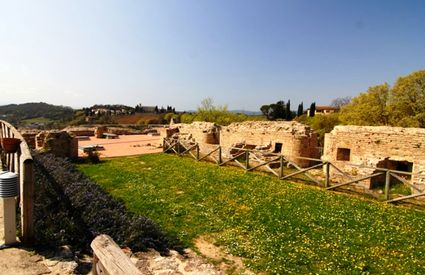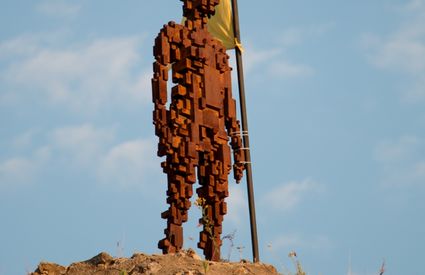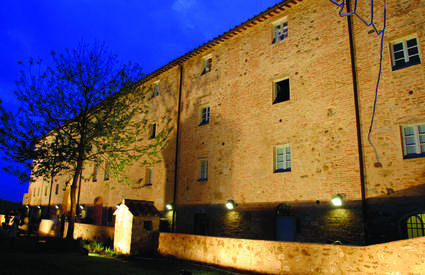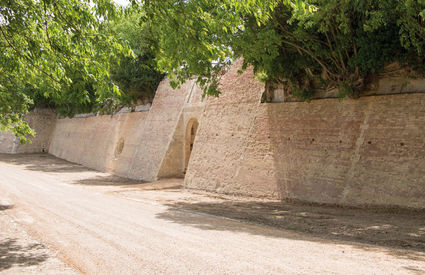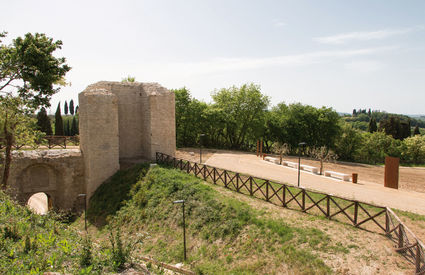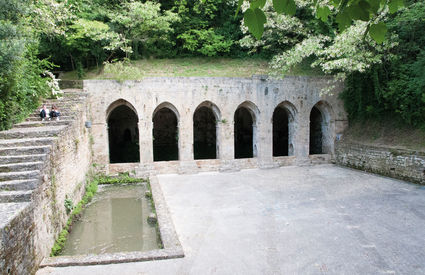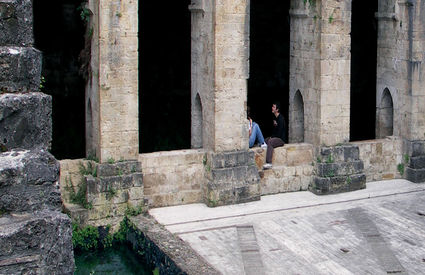Poggibonsi
A journey into the times of Charlemagne
Experience the Middle Ages in Valdelsa, among fortresses, villages and magic fountains
A journey into the times of Charlemagne
Experience the Middle Ages in Valdelsa, among fortresses, villages and magic fountains
A leap into the past….the Archeodromo
Experiencing the Middle Ages in Poggibonsi means to partake in a true journey to the past. The ideal place to begin this trip through time is surely the Archeodromo, a 1:1 reproduction of one of the most important discoveries in the hills of Poggio Imperiale: a village dating back to the time of the Franks (IX and X centuries), where visitors can observe the life of a real court, complete with a manor house, a large hut surrounded by smaller buildings used for artisan activities and storage.
The Archeological Park and Keep
The second stop on our journey through time is the Poggio Imperiale Archeological Park, which offers the possibility to visit different stages of urban settlements brought to light over nearly 15 years of archeological digs. Nearby is the Keep, the citadel of the Medici Fortress. The pentagonal fortification has just one door and two strong defensive towers on the side. Once inside, you’ll forget which era you come from….
The Medici Fortress
The Poggio Imperiale Medici Fortress completes this effect of magical suspension in time, surrounding the Archeodromo, archeological dig sites, and Keep. Built between 1488 and 1511 by Giuliano da Sangallo for Lorenzo the Magnificent, the building remained incomplete due to the death of Lorenzo and for the many conflicts between Siena and Florence. The structure is made up of the fortress itself and the brick city wall circling it, which extends over one kilometer. The only entrance is adorned with a drawbridge, and it is over this bridge that you must cross to reach the last stop in our trip back to the Middle Ages.
The Fountain of the Fairies
Of Poggibonsi’s six fountains, it is the only one that survives to this day. Constructed in the XIII century, it was “covered” in the 15th century during the Fortress’s construction. It was brought to light again in 1803, when a vineyard was built. According to some, the Fountain of the Fairies was realized by Balugano da Crema, a Lombard architect from the XIII century. In 1850, Attilio Ciaspini discovered proof that Balugano was responsible for this remarkable work in a XIII century “anonymous account from the Sapienza of Siena.” The fountain’s name refers to the belief that the waters, springs, and marshes were enigmatic places, protected by strange creatures….and no journey to the Middle Ages would be worthy of the name without the reassuring presence of some enchanted beings.
Bringing us back to our own time, our journey ends with a contemporary work of art found in the Fountain: I Dormienti, by Mimmo Paladino, created in 1998.


